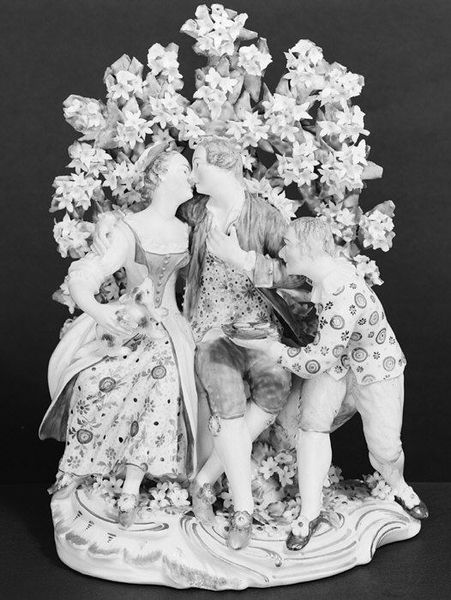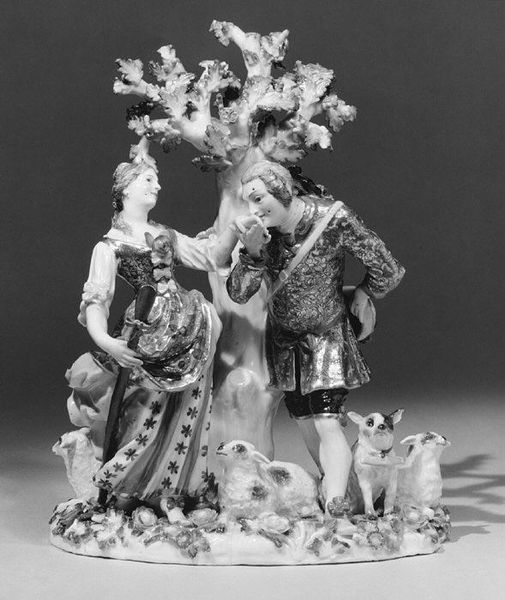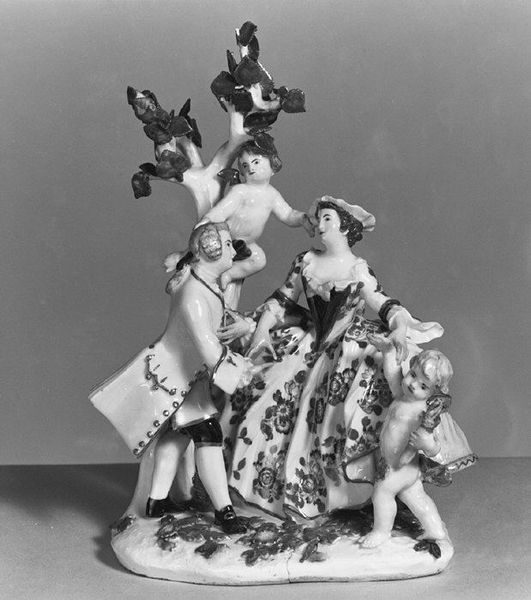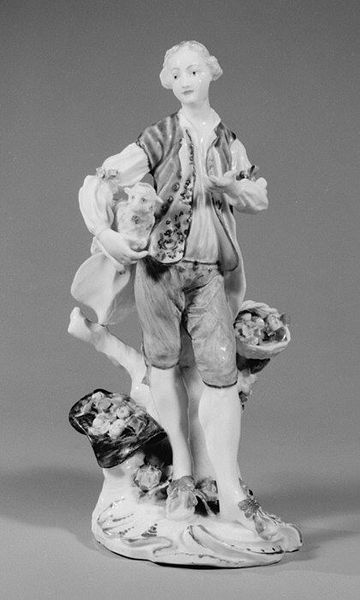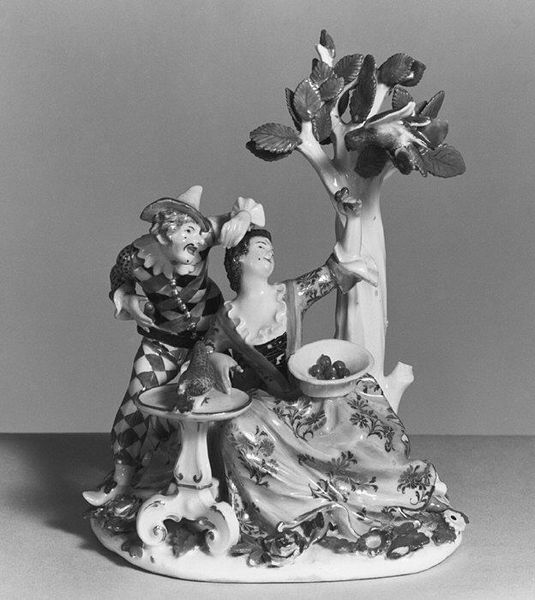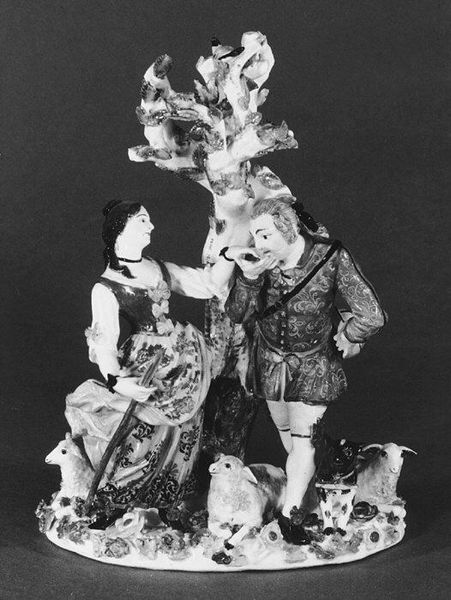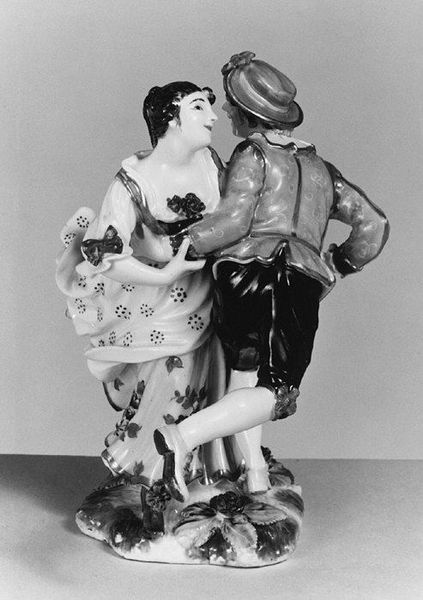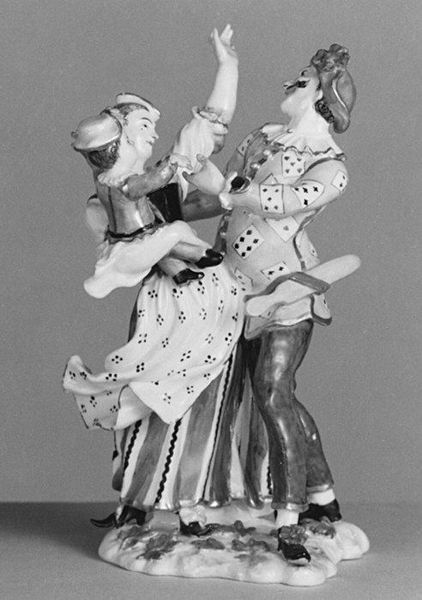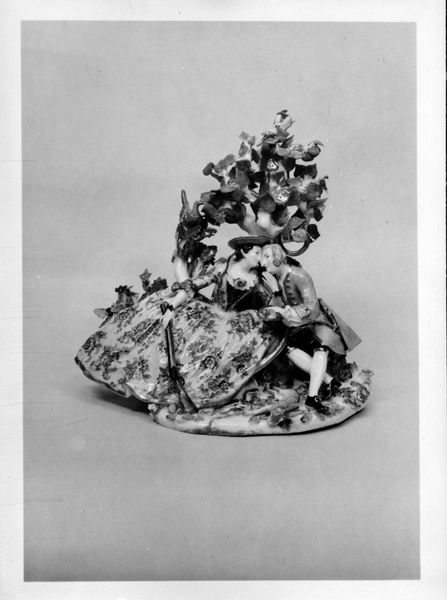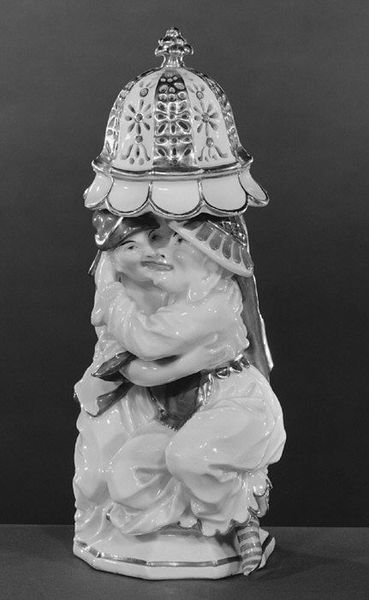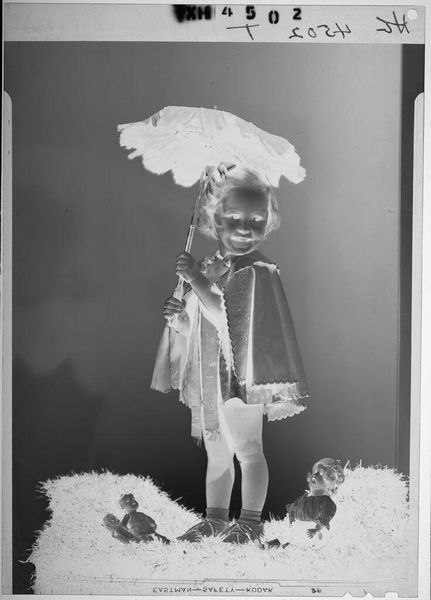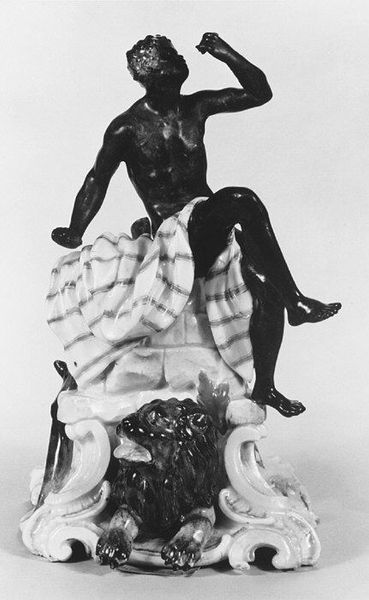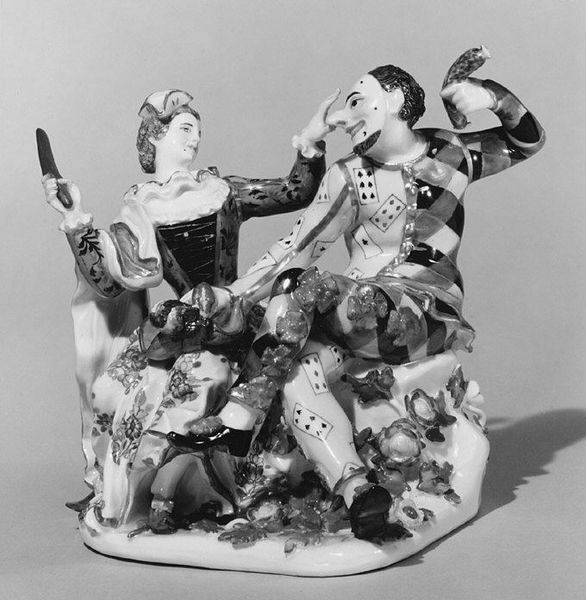
ceramic, porcelain, sculpture
#
sculpture
#
ceramic
#
porcelain
#
figuration
#
sculpture
#
genre-painting
#
monochrome
#
decorative-art
#
rococo
#
monochrome
Dimensions: Height: 11 1/4 in. (28.6 cm)
Copyright: Public Domain
Editor: This is "Shepherd Lovers," a porcelain sculpture created by the Meissen Manufactory between 1737 and 1750. It depicts a couple in pastoral attire, and something about its fragility and detailed craftsmanship really strikes me. What stands out to you? Curator: I immediately think about the process of production. Consider the resources, the labour division in the Meissen factory – from mining the raw materials to the highly skilled painting. Was there a hierarchy of labor impacting the creation of the piece? Editor: That's interesting. So, instead of focusing on the artistic genius, you are more interested in the whole production ecosystem? Curator: Precisely. The Rococo style often depicts idealized scenes of leisure and romance, but who had access to those commodities, and at what cost? Porcelain was extremely valuable. Think about the accessibility of this subject represented in such expensive material! This is decorative art intended for aristocratic patrons. What implications did its display have on its wealthy consumers? Editor: Right, it was a luxury item representing leisure, owned by people with privilege, manufactured by underpaid workers. Was the making of porcelain pieces always viewed as "art" production, or something else? Curator: That is an important point. The materials used, porcelain and ceramic, also invite this reflection. Were these porcelain figures valued differently than bronze sculptures, for example, due to how ordinary people related to these materials? And who decides where it would be exhibited, a curiosity cabinet or a museum? These distinctions reinforce power dynamics. Editor: It's fascinating how looking at the materials and labor involved changes the way we understand the sculpture's message and purpose. Thanks for sharing this materialist perspective, it really helped to expand my knowledge. Curator: My pleasure! It's important to critically analyze the system within which an artwork is conceived and created, going beyond what's immediately visible.
Comments
No comments
Be the first to comment and join the conversation on the ultimate creative platform.
